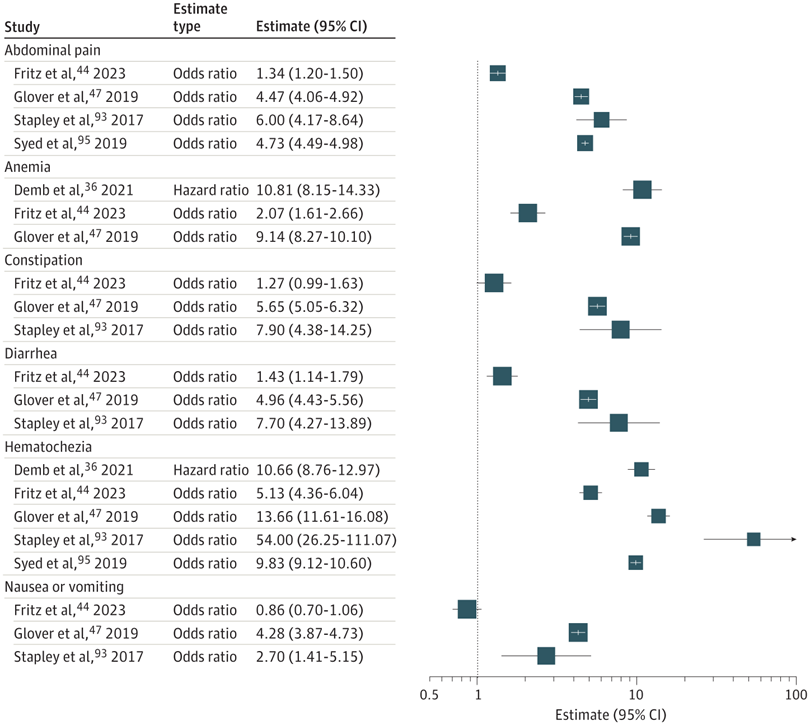LOS ANGELES — Colorectal cancer is one of the most common cancers in the United States and worldwide, with about 4,000 cases diagnosed each year in the VA alone. While the rate of colorectal cancer among older individuals—who traditionally were at greatest risk—has decreased in recent years, the incidence in younger people has been increasing at an “alarming rate,” according to a recent study.
The report in JAMA Network Open noted that, by 2030, the rates of early-onset colorectal cancer (EOCRC), defined as a diagnosis at younger than age 50 years, are projected to increase by 140%.
The increasing rate of EOCRC has prompted U.S. national society guidelines to lower the age for screening from 50 to 45 for average-risk individuals. Yet, “despite this policy change and more widespread awareness of the issue, there are still many young adults who go undiagnosed for far too long,” Jennifer Kolb, MD, MS, the study’s first author, told U.S. Medicine. “The aims of our study were to identify the most common presenting signs and symptoms in EOCRC and to report how often these findings are associated with cancer, as well as to define the typical time interval from presentation to diagnosis.”1
For the study, researchers searched PubMed/MEDLINE, Embase, CINAHL and Web of Science from database inception though May 2023 for studies that reported on sign and symptom presentation or time from sign and symptom presentation to diagnosis for patients younger than age 50 years diagnosed with nonhereditary CRC. “This search resulted in 81 studies with 24,908,126 patients younger than 50 years globally. All of these studies were carefully reviewed, and the relevant data were extracted for meta-analysis,” said Kolb, who is an assistant professor of medicine the David Geffen School of Medicine at UCLA and staff physician at the VA Greater Los Angeles Healthcare System.
Outcomes of interest were pooled proportions of signs and symptoms in patients with EOCRC, estimates of an association of signs and symptoms with EOCRC risk and time from sign or symptom presentation to EOCRC diagnosis.
The most common presenting signs and symptoms, reported by 78 of the included studies, were hematochezia, or rectal bleeding (pooled prevalence, 45%), abdominal pain (pooled prevalence, 40%) and altered bowel habits (27%), which included constipation, diarrhea, alternating bowel habits or alternating diarrhea or constipation. When evaluating patterns by geography, the three most common presenting signs and symptoms were the same in both the U.S. and non-U.S. studies.
Symptom Presentation to Diagnosis
“Rectal bleeding, abdominal pain, constipation, diarrhea and anemia were associated with higher EOCRC risk,” Kolb explained, adding, “The time from symptom presentation to diagnosis ranged between 4–6 months.”
In fact, according to the analysis, rectal bleeding was associated with at least five-fold increased EOCRC risk.
“Delayed diagnosis may be a result of late presentation and lack of clinician knowledge of common CRC symptoms,” the researchers wrote. “Patients and clinicians alike may downplay symptom severity and fail to recognize key red flags and clinical cues that should trigger suspicion of CRC.”
For Kolb, one of the most surprising findings of the analysis was that a “common, non-specific symptom such as abdominal pain” was reported in nearly half of individuals with EOCRC. “These findings underscore that EOCRC should be part of the initial differential diagnosis for any young patient presenting with new gastrointestinal symptoms and a plan for diagnostic evaluation and management should be put in place,” she said.
“Red flag signs or symptoms, such as rectal bleeding, abdominal pain, weight loss, iron deficiency anemia or a change in bowel habits, need to be comprehensively evaluated,” Kolb advised. “Clinicians should triage these symptoms by incorporating the clinical context, guidelines and individual symptom severity to determine if the patient should go for an immediate colonoscopy or complete other testing.”
“A timely evaluation and diagnosis is necessary to prevent delays in cancer diagnosis,” she added. “These results also should serve to inform patients to be vigilant about any changes to their health or new symptoms and report any concerns to their medical team.”
- Demb, J., Kolb, J. M., Dounel, J., Fritz, C. D. L., et al. (2024). Red Flag Signs and Symptoms for Patients With Early-Onset Colorectal Cancer: A Systematic Review and Meta-Analysis. JAMA Network Open, 7(5), e2413157. https://doi.org/10.1001/jamanetworkopen.2024.13157


